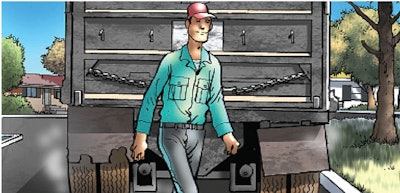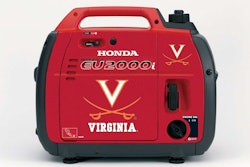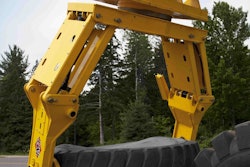Dump Truck Dangers

By Amy Materson
The accident: A milling machine was removing asphalt and depositing it in a dump truck. An engineering technician employed by the subcontractor stepped behind the dump truck to measure the amount of asphalt milled just as the truck driver began backing toward the machine. The truck struck the technician, who was pronounced dead at the scene from head injuries.
The bottom line: The truck was traveling just 5 mph, had audible backing alarms and the driver honked the horn prior to backing; however the victim apparently did not see or hear the truck. The technician had also stepped from behind a parked truck on the side of the road, so the driver did not see him enter into the vehicle’s path. A post-accident investigation determined the victim had high-visibility safety vests and other equipment in his own vehicle, but was not wearing any personal protective equipment at the time of the accident. The subcontractor’s written safety program did not include requirements for PPE wear.
Be seen on the site
Don’t automatically assume every operator is aware of the foot traffic around his machine. Take the following steps to ensure you’re not in a truck’s path.
• Notify the foreman as soon as you arrive on site. Checking in with the site supervisor not only lets him know who is on site, but also gives him an opportunity to discuss with you any safety issues the job presents.
• Wear appropriate PPE. You should wear appropriate high-visibility safety apparel at all times, but especially when on foot. These items can include vests, arm bands and hard hat covers. Ask your supervisor if you are missing any items.
• Listen for audible alarms. When you hear equipment alarms day after day, they can become background noise, making you complacent to the dangers around you. Each time you hear an alarm near you, identify the source of the alarm to ensure you’re not in the path of a piece of equipment.
• Avoid equipment traffic areas, if possible. When on foot, avoid areas with truck travel and heavy equipment use. Your supervisor should have temporary pavement markings indicating the lanes of travel and the flow of traffic. These markings indicate a pedestrian-free area. If you must step into a lane of travel, never do so until you have the go ahead from the vehicle’s driver.
Information for this Safety Watch was taken from an accident report and from the Center for Disease Control’s NIOSH Fatality Assessment and Control Evaluation Program. It is meant for general information only.












